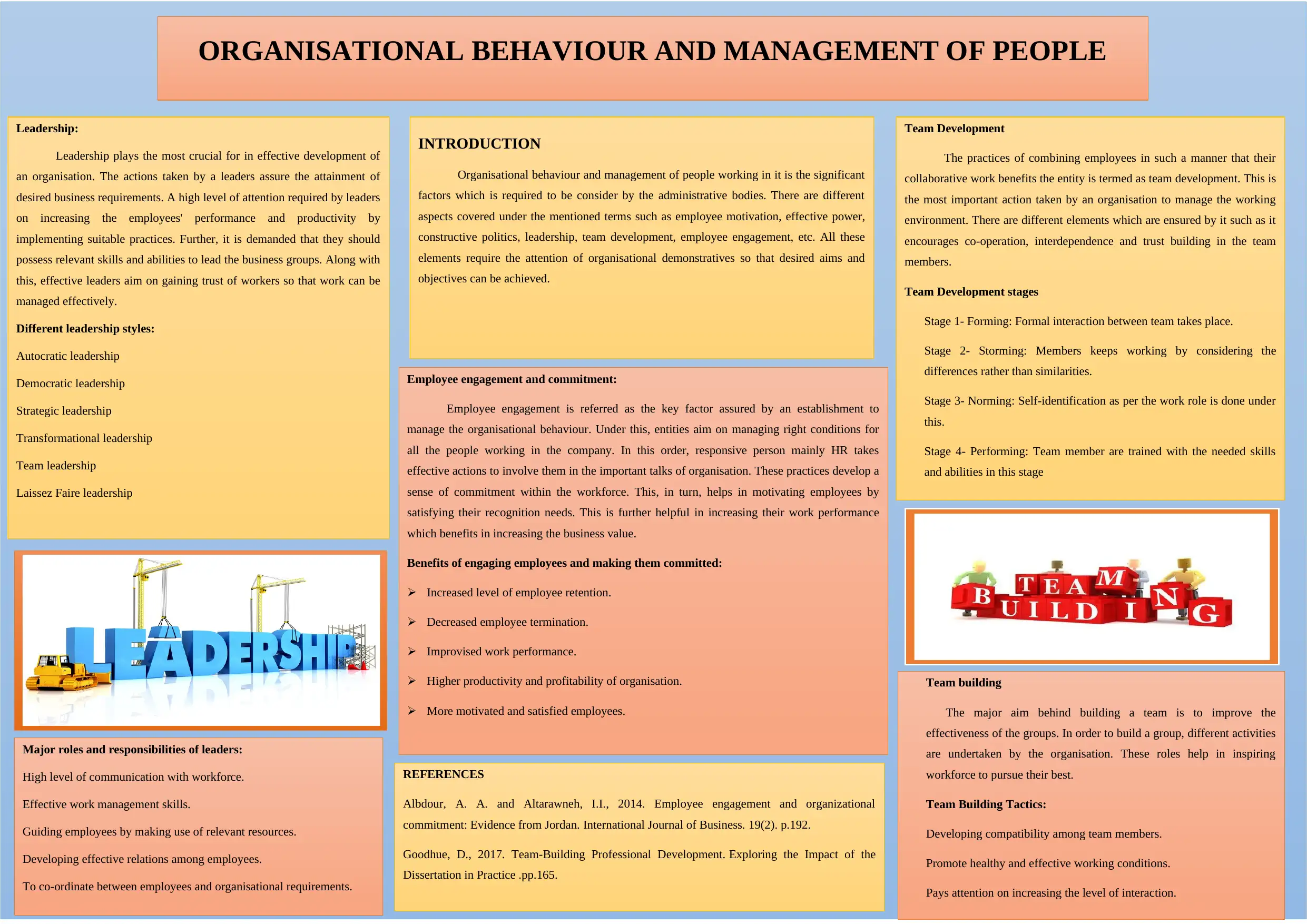Employee Engagement, Leadership, and Team Report Analysis
VerifiedAdded on 2020/07/22
|1
|650
|81
Report
AI Summary
This report delves into the critical aspects of employee engagement, leadership, and team development within an organizational context. It emphasizes the significance of employee engagement as a key factor in managing organizational behavior, highlighting practices that foster commitment and motivation among employees. The report explores the benefits of engaged employees, such as increased retention, improved work performance, and enhanced productivity. Furthermore, it examines the importance of team development, outlining the stages involved and the tactics used to build effective teams. The report also discusses various leadership styles, including autocratic, democratic, strategic, transformational, team, and laissez-faire approaches, along with the major roles and responsibilities of leaders. The analysis provides a comprehensive overview of these interconnected elements and their impact on organizational success, supported by references to relevant literature and research.





![[object Object]](/_next/static/media/star-bottom.7253800d.svg)